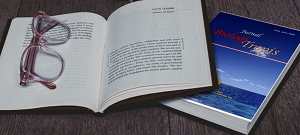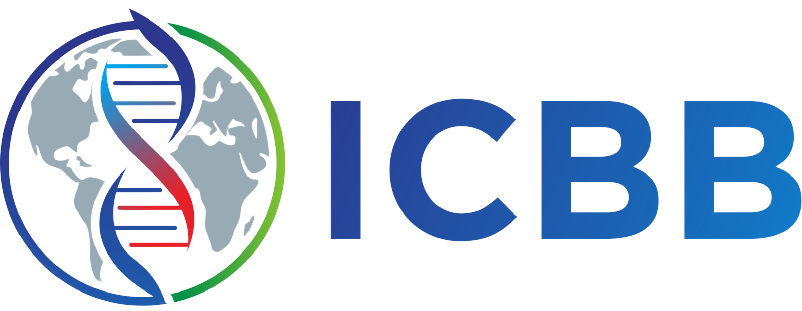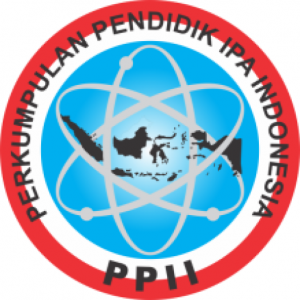Wound Healing Potential of Sargassum plagiophyllum Extract on Mice Model with Incision Lesion
Authors
Andita Ayu Mandasari , Nadia Rahadatul A'isyi , Dheasy HerawatiDOI:
10.29303/jbt.v25i1.8256Published:
2025-01-21Issue:
Vol. 25 No. 1 (2025): Januari - MaretKeywords:
Healing, Sargassum plagyophyllum, wound.Articles
Downloads
How to Cite
Downloads
Metrics
Abstract
The skin serves as the body's outer protection against infection and plays an important role in water and electrolyte balance. The skin is often injured which increases the risk of infection if the wound does not close immediately. This study explored the potential of concentrated extract of Sargassum plagyophyllum in healing incision wounds in mice. Mice were given a 1 cm incision wound and then given CaCl2 S. plagyophyllum extract as the treatment group, povidine iodine as the positive control group, while the negative control group was not given anything. Macroscopic results showed that the wounds in the treatment group healed on day 17, while the negative and positive groups healed on days 15 and 16. Microscopic images showed that the inflammatory phase of wound healing was seen on day five in all groups which showed a normal phase of wound healing. These results indicate that the CaCl2 extract of S. plagyophyllum has the same potency as the positive group, but it is very important to consider the right formulation so that the effectiveness can be increased and faster in wound healing in future studies.
References
Alsareii, S. A., Alzerwi, N. A. N., Alasmari, M. Y., Alamri, A. M., Mahnashi, M. H., Shaikh, I. A., Savant, C., Kulkarni, P. V., Shettar, A. K., Hoskeri, J. H., & Kumbar, V. (2023). Manilkara zapota L. extract topical ointment application to skin wounds in rats speeds up the healing process. Front Pharmacol, 14, 1206438. https://doi.org/10.3389/fphar.2023.1206438
Arifin, B., & Ibrahim, S. (2018). Struktur, bioaktivitas dan antioksidan flavonoid. Jurnal Zarah, 6(1), 21-29. https://doi.org/https://doi.org/10.31629/zarah.v6i1.313
Arwidasari, A. R., Cevanti, T. A., & Soewondo, I. K. (2019). Effectiveness of Sargassum sp. ethanolic extract on traumatic ulcers healing in the labial mucosa of Wistar strain (Rattus norvegicus). Padjadjaran J Dent, 31(1), 73. https://doi.org/https://doi.org/10.24198/pjd.vol31no1.16513
Braiman-Wiksman, L., Solomonik, I., Spira, R., & Tennenbaum, T. (2007). Novel insights into wound healing sequence of events. Toxicol Pathol, 35(6), 767-779. https://doi.org/10.1080/01926230701584189
Chambers, E. S., & Vukmanovic‐Stejic, M. (2020). Skin barrier immunity and ageing. Immunology, 160(2), 116-125. https://doi.org/https://doi.org/10.1111/imm.13152
Chang, R. K., Raw, A., Lionberger, R., & Yu, L. (2013). Generic development of topical dermatologic products: formulation development, process development, and testing of topical dermatologic products. Aaps j, 15(1), 41-52. https://doi.org/10.1208/s12248-012-9411-0
Diharningrum, I. M., & Husni, A. (2018). METODE EKSTRAKSI JALUR ASAM DAN KALSIUM ALGINAT BERPENGARUH
PADA MUTU ALGINAT RUMPUT LAUT COKELAT Sargassum hystrix J. Agardh. Jurnal Pengolahan Hasil Perikanan Indonesia, 21(3). https://doi.org/10.17844/jphpi.v21i3.24737
Dolorosa, M. T., Nurjanah, P. S., Anwar, E., & Hidayat, T. (2017). Kandungan senyawa bioaktif bubur rumput laut Sargassum plagyophyllum dan Eucheuma cottonii sebagai bahan baku krim pencerah kulit. Jurnal Pengolahan Hasil Perikanan Indonesia, 20(3), 633-644. https://doi.org/10.17844/jphpi.v20i3.19820
Edison, E., Diharmi, A., Ariani, N. M., & Ilza, M. (2020). Komponen bioaktif dan aktivitas antioksidan ekstrak kasar Sargassum plagyophyllum. Jurnal Pengolahan Hasil Perikanan Indonesia, 23(1), 58-66. https://doi.org/10.17844/jphpi.v23i1.30725
Fernández-Guarino, M., Hernández-Bule, M. L., & Bacci, S. (2023). Cellular and Molecular Processes in Wound Healing. Biomedicines, 11(9), 2526. https://www.mdpi.com/2227-9059/11/9/2526
Feroz, B. (2018). Saponins from Marine Macroalgae: A Review. Journal of Marine Science: Research & Development, 08. https://doi.org/10.4172/2155-9910.1000255
Ghosh, D., Mondal, S., & Ramakrishna, K. (2019). A topical ointment formulation containing leaves extract of Aegialitis rotundifolia Roxb., accelerates excision, incision and burn wound healing in rats. Wound Medicine, 26(1), 100168. https://doi.org/https://doi.org/10.1016/j.wndm.2019.100168
Guo, S., & Dipietro, L. A. (2010). Factors affecting wound healing. J Dent Res, 89(3), 219-229. https://doi.org/10.1177/0022034509359125
Hanáková, Z., Hošek, J., Kutil, Z., Temml, V., Landa, P., Vaněk, T., Schuster, D., Dall'Acqua, S., Cvačka, J., Polanský, O., & Šmejkal, K. (2017). Anti-inflammatory Activity of Natural Geranylated Flavonoids: Cyclooxygenase and Lipoxygenase Inhibitory Properties and Proteomic Analysis. J Nat Prod, 80(4), 999-1006. https://doi.org/10.1021/acs.jnatprod.6b01011
Herawati, D., & Pudjiastuti, P. (2021). Effect of different solvents on the phytochemical compounds of Sargassum sp. from Yogyakarta and east Nusa Tenggara. Journal of Physics: Conference Series,
Koh, T. J., & DiPietro, L. A. (2011). Inflammation and wound healing: the role of the macrophage. Expert Rev Mol Med, 13, e23. https://doi.org/10.1017/s1462399411001943
Landén, N. X., Li, D., & Ståhle, M. (2016). Transition from inflammation to proliferation: a critical step during wound healing. Cell Mol Life Sci, 73(20), 3861-3885. https://doi.org/10.1007/s00018-016-2268-0
Laut, M., Ndaong, N., & Utami, T. (2019). Cutaneous wound healing activity of herbal ointment containing the leaf extract of Acalypha indica L. on mice (Mus musculus). Journal of Physics: Conference Series,
Lei, T., Gao, Y., Duan, Y., Cui, C., Zhang, L., & Si, M. (2022). Panax notoginseng saponins improves healing of high glucose-induced wound through the GSK-3β/β-catenin pathway. Environ Toxicol, 37(8), 1867-1877. https://doi.org/10.1002/tox.23533
Leny, L., Situmorang, T. N. K., Siagian, R., Hafiz, I., & Iskandar, B. (2023). Ointment Formulation of Tapak Dara (Catharanthus roseus (L.) G. Don) Flower Ethanol Extract and its Activity in Burn-Healing. Borneo Journal of Pharmacy, 6(2), 182-189. https://doi.org/https://doi.org/10.33084/bjop.v6i2.3155
Lodhi, S., Jain, A., Jain, A. P., Pawar, R. S., & Singhai, A. K. (2016). Effects of flavonoids from Martynia annua and Tephrosia purpurea on cutaneous wound healing. Avicenna J Phytomed, 6(5), 578-591. https://doi.org/PMC5052421
Maharani, A. A., Husni, A., & Ekantari, N. (2017). Effect of Extraction Methods on Characteristic of SodiumAlginate from Brown Seaweed Sargassum fluitans. Jurnal Pengolahan Hasil Perikanan Indonesia, 20(3), 478-487. https://doi.org/10.17844/jphpi.v20i3.19768
Muslimin, M., & Sari, W. K. P. (2018). Budidaya rumput laut Sargassum sp. dengan metode kantong pada beberapa tingkat kedalaman di dua wilayah perairan berbeda. Jurnal Riset Akuakultur, 12(3), 221-230. https://doi.org/10.15578/jra.12.3.2017.221-230
Paga, A., Agus, A., Kustantinah, K., & Budisatria, I. G. S. (2022). Secondary metabolites content of seaweed (Sargassum sp.) based on the different drying methods. 6th International Seminar of Animal Nutrition and Feed Science (ISANFS 2021),
Putri, F. E., Diharmi, A., & Karnila, R. (2023). Identifikasi Senyawa Metabolit Sekunder Pada Rumput Laut Coklat (Sargassum plagyophyllum) Dengan Metode Fraksinasi. Jurnal Teknologi Dan Industri Pertanian Indonesia, 15(1), 40-46. https://doi.org/10.17969/jtipi.v15i1.23318
Qureshi, O., & Dua, A. (2024). COX Inhibitors. In StatPearls. StatPearls Publishing
Copyright © 2024, StatPearls Publishing LLC. https://doi.org/NBK549795
Senduk, T. W., Montolalu, L. A., & Dotulong, V. (2022). The rendement of boiled water extract of mature leaves of mangrove Sonneratia alba. Jurnal Perikanan Dan Kelautan Tropis, 11(1), 9-15. https://doi.org/https://doi.org/10.35800/jpkt.11.1.2020.28659
Sidauruk, S. W., Sari, N. I., Diharmi, A., & Arif, I. (2021). Aktivitas antibakteri ekstrak Sargassum plagyophyllum terhadap bakteri Listeria monocytogenes dan Pseudomonas aeruginosa. Jurnal Pengolahan Hasil Perikanan Indonesia, 24(1), 27-37. https://doi.org/10.17844/jphpi.v24i1.33417
Vestita, M., Tedeschi, P., & Bonamonte, D. (2022). Anatomy and Physiology of the Skin. In M. Maruccia & G. Giudice (Eds.), Textbook of Plastic and Reconstructive Surgery: Basic Principles and New Perspectives (pp. 3-13). Springer International Publishing. https://doi.org/10.1007/978-3-030-82335-1_1
Wang, Z., Qi, F., Luo, H., Xu, G., & Wang, D. (2022). Inflammatory Microenvironment of Skin Wounds. Front Immunol, 13, 789274. https://doi.org/10.3389/fimmu.2022.789274
Widyaswari, S. G., METUSALACH, M., KASMIATI, K., & AMIR, N. (2024). Bioactive compounds and DPPH antioxidant activity of underutilized macroalgae (Sargassum spp.) from coastal water of Makassar, Indonesia. Biodiversitas Journal of Biological Diversity, 25(1). https://doi.org/10.13057/biodiv/d250118
You, S., Jang, M., & Kim, G.-H. (2021). Inhibition of nitric oxide and lipid accumulation by Sargassum sp. seaweeds and their antioxidant properties. Korean Journal of Food Preservation, 28(2), 288-296. https://doi.org/10.11002/kjfp.2021.28.2.288
Zishan, S. A., Uddin, M. M., Mohammad, M., Asadul Karim Azad, S., Naima, J., Ibban, S. S., & Saiful Islam Arman, M. (2024). Costus speciosus leaf and seed extracts for wound healing: a comparative evaluation using mice excision wound models. Clinical Phytoscience, 10(1), 5. https://doi.org/10.1186/s40816-024-00368-9
License
Copyright (c) 2025 Andita Ayu Mandasari, Nadia Rahadatul A'isyi, Dheasy Herawati

This work is licensed under a Creative Commons Attribution 4.0 International License.

Jurnal Biologi Tropis is licensed under a Creative Commons Attribution 4.0 International License.
The copyright of the received article shall be assigned to the author as the owner of the paper. The intended copyright includes the right to publish the article in various forms (including reprints). The journal maintains the publishing rights to the published articles.
Authors are permitted to disseminate published articles by sharing the link/DOI of the article at the journal. Authors are allowed to use their articles for any legal purposes deemed necessary without written permission from the journal with an acknowledgment of initial publication to this journal.


























